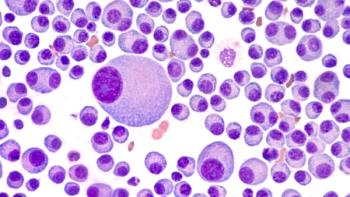
Predicting Mortality in Cancer Patients with Other Serious Diseases
Personalized cancer treatments need to account for conditions such as heart or lung diseases.
Researchers have developed a more precise prognostic model that can better assess the mortality risk in elderly cancer patients with other serious diseases.
In order to give better personalized therapy treatments, doctors need to take into account other conflicting diseases, such as heart or lung disease.
A common approach to estimate prognosis uses survival or recurrence rates as a form of measure. However, this approach is unable to distinguish risk factors for cancer versus competing health conditions.
A study published in the Journal of Clinical Oncology used a Medicare database to identify 84,319 elderly patients with non-metastatic prostate, head and neck, and breast cancers.
The standard risk-stratification strategy was compared against a novel model that accounts for competing events in order to determine whether the model gave more accurate risk assessments for different causes of mortality.
“The approach is quite different from just considering one's cancer stage, or tumor genetics, and supersedes these methods by using the same information in a different and better way, using a method called supervised machine learning,” said senior author Loren K. Mell, MD.
During the study, researchers tested the novel statistical approach in order to separate patients with high versus low omega.
“We found that the method we developed improves upon the standard method that has been in use since the 1950's — and the most widely used approach today – by overcoming a fundamental mathematical limitation,” Mell added.
The omega factor is a quantitatively and qualitatively new way to assess health risks and refers to the ratio of a patient’s risk for cancer mortality to their overall hazard for mortality. In order to make this calculation, researchers computed values from data sets of similar patients.
These calculations are able to better predict how likely a patient would benefit from aggressive cancer therapies.
“Every patient should know their own 'omega factor' since it might influence their and their doctor's decision-making, especially if faced with the choice of more versus less therapy,” Mell said.
This new method could also be used to help assess competing health risks in patients suffering from other conditions or diseases.
Newsletter
Stay informed on drug updates, treatment guidelines, and pharmacy practice trends—subscribe to Pharmacy Times for weekly clinical insights.




















































































































































































































